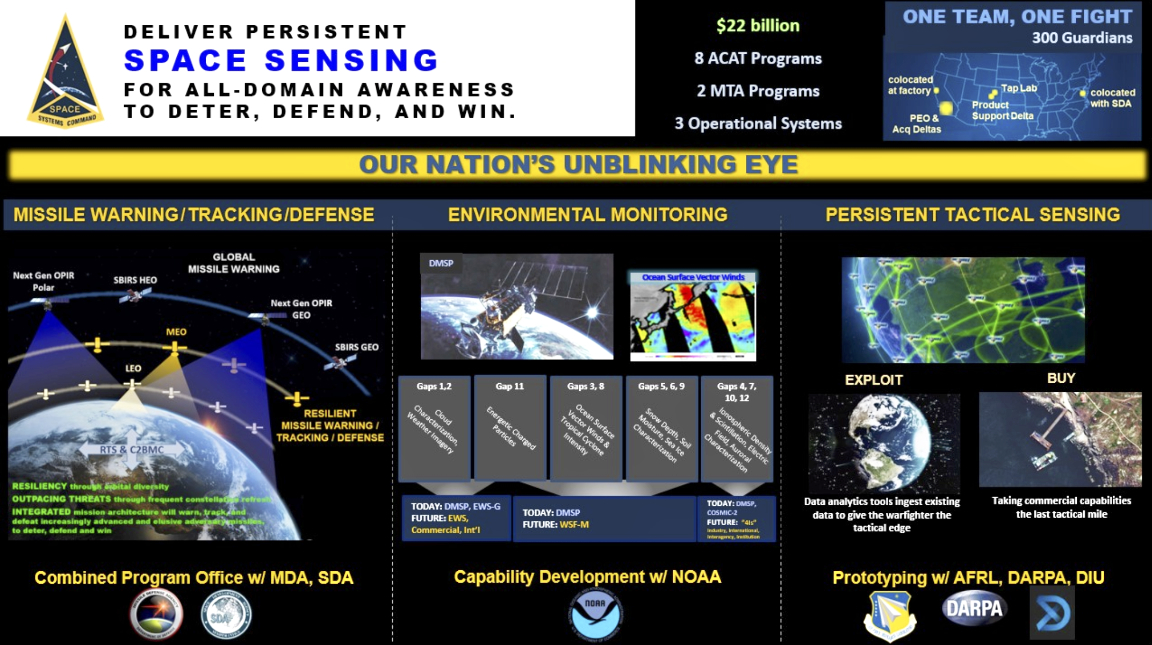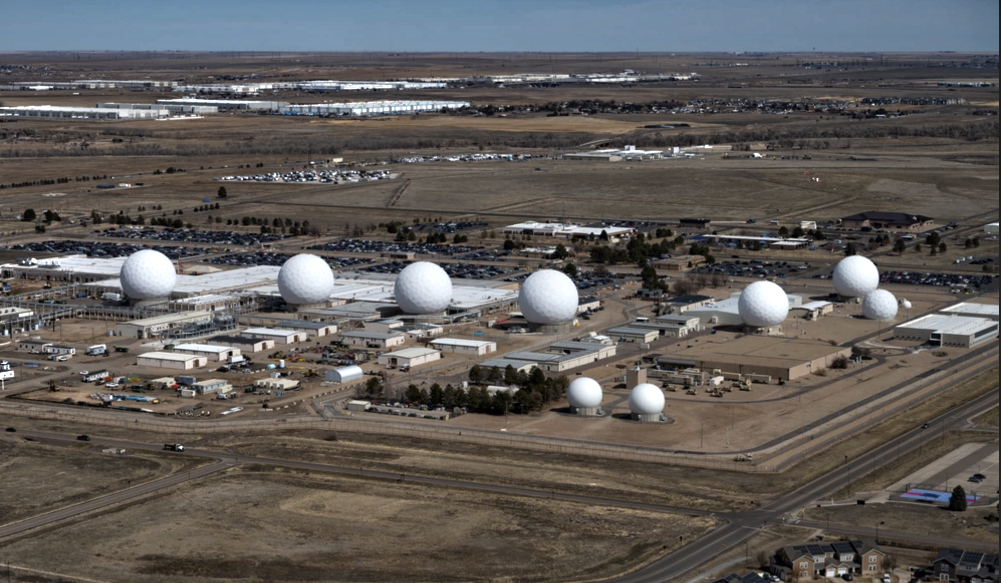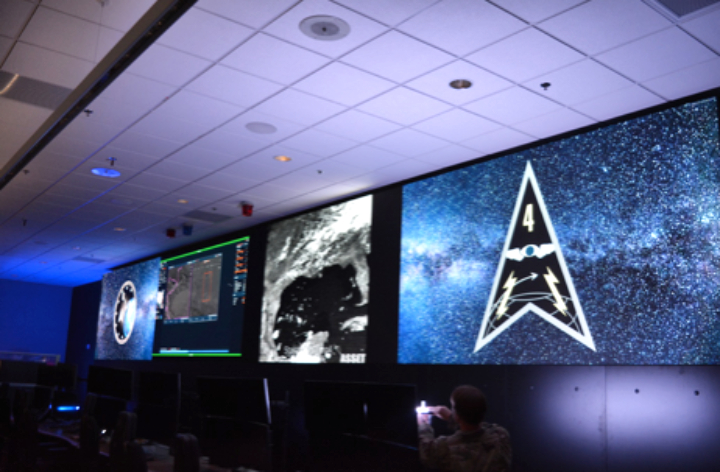
Space Systems Command’s Space Sensing program executive office, headquartered at Los Angeles Air Force Base in El Segundo, California, has delivered the first of two software deliveries to operations in the Overhead Persistent Infrared (OPIR) Battlespace Awareness Center (OBAC) at Buckley Space Force Base, Colorado.

Delivery of the FORGE framework to the OBAC provides increased cyber resilience, and enhanced mission applications to operators. OBAC operations on FORGE bolster the OPIR battlespace awareness and technical intelligence missions with significant cyber-security improvements and enhanced missile detection and tracking. Additionally, the operational trial period preparing for this delivery provided opportunities to significantly stress the FORGE framework with real-world events.

Notably, the framework performed in family with the legacy system, enabling the battlespace awareness and technical intelligence mission as the OBAC’s operational baseline. Proven sustainment of mission capability on the FORGE framework is essential to ensure coordination of a successful defense against threats around the world.

The FORGE capability architecture is foundational to provide OPIR data to operational warfighters, and to enable the U.S. Space Force’s pivot to a resilient missile warning, tracking, and defense architecture. The FORGE ground system will support continued operations of legacy Space Based Infrared System (SBIRS), as well as the next generation of OPIR sensors including Next Gen OPIR GEO & Polar, and Resilient Missile Warning / Missile Track MEO space systems.
FORGE provides a modern, cyber-resilient, flexible, scalable, and government-owned open architecture needed to support the development, integration, and delivery of OPIR processing applications for rapid response to emerging threats.
The FORGE framework facilitates open architectures that maximize utilization of the OPIR constellation as well as accelerating the ability for new capabilities to be added frequently and efficiently. It enables the use of existing Commercial Off-The-Shelf (COTS), Government Off-The-Shelf (GOTS), and Free or Open-Source Software (FOSS) products, enabling a rapid pivot to new solutions depending on mission needs. This approach expands opportunities for a wide range of vendors, thus empowering the government to have access to the latest industry innovations while simultaneously strengthening and increasing resiliency in the weapon system and industrial base.
Marking a significant step towards transforming the Nation’s ability to respond to new missile threats by considerably reducing the time between development and operations, this operational delivery provides new OPIR capabilities to the 2d, 8th and 11th Space Warning Squadrons, as well as the 64th Cyberspace Squadron.
This effort will demonstrate the ability to host vital data processing applications on the FORGE Framework, while in an operational environment, during a robust Operational Acceptance (OA) campaign.
“Our Nation’s ability to quickly sense and make sense of OPIR observations is crucial in maintaining decision-making advantage against adversarial threats and their advanced missile technologies,” said U.S. Space Force Col. Robert Davis, Space Force program executive officer for Space Sensing. “This effort enables target tracking earlier and for a longer duration, which significantly increases the event custody chain. Timely response to threats requires a modern architecture capable of hosting data from a range of new and legacy sensors that enables the development of applications to address these threats. FORGE’s modular architecture with an agile development approach is showing that you can deliver fast even in tough, complex mission areas. I’m extremely excited about what the combined government and industry team has already been able to do, and I look forward to the next operational capability delivery.”
“This first delivery is the start of many deliveries to come,” said U.S. Space Force Lt. Col. Morgan Sparks, FORGE materiel leader. “Our next delivery will build on our cyber resilience and provide even greater capability to the warfighter, modernizing the operator interface with modern data visualization technologies while significantly improving our nation’s ability to detect stealthier and additional quantities of threats sooner, and to track them longer. We look forward to continuing to build upon this strong foundation to enable faster deliveries to operators.”
“Partnerships with the operations community have been paramount in our development process,” said Mr. Jonwa Kim, senior materiel leader, Strategic Missile Warning Ground Delta. “It is through the strength of these partnerships that will ensure our nation possesses the most advanced strategic missile warning capabilities to meet new and emerging threats.”
“Ensuring our acquisition efforts further enable operators to combat space threats is paramount in our procurement and development processes,” said U.S. Space Force Capt. Malik McCoy, FORGE framework program manager and former Space Delta 4 operator. “Our shoulder-to-shoulder partnership with operational users provided relevant perspectives and shaped our approach. We drove cyber resilience and advanced mission applications into the system, transitioning our legacy systems to a more modern architecture. These efforts are paramount to provide a timely defense to counter new and emerging missile threats.”
Space Systems Command is the U.S. Space Force’s field command responsible for acquiring, developing, and delivering resilient capabilities and groundbreaking technologies to protect our nation’s strategic advantage in, from, and to space. SSC manages a $15.6 billion space acquisition budget for the Department of Defense and works in partnership with joint forces, industry, government agencies, academic and allied organizations to accelerate innovation and outpace emerging threats. Our actions today are making the world a better space for tomorrow.
